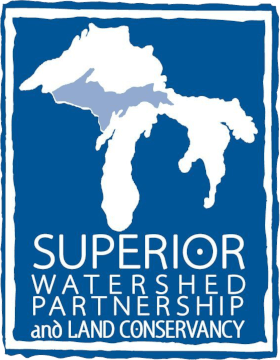40% Reduction in Mercury Entering Lake Superior
The Superior Watershed Partnership was featured in a special report for the Environmental Protection Agency by the National Academy of Public Administration. The report outlines how regional organizations broke national records for pollution prevention with the assistance of federal funding.
The SWP in collaboration with the Superior District Dental Association helped over 30 dentists completely eliminate mercury waste by installing mercury amalgam separators. The result was a 19 percent decrease in the amount of mercury discharged from Marquette’s waste-water treatment plant into Lake Superior. Scroll down for more information on this program.
What is it?
Mercury is a naturally occurring element that is found in air, water and soil. It exists in several forms: elemental or metallic mercury, inorganic mercury compounds, and organic mercury compounds.
Sources
Mercury is an element in the earth’s crust. Humans cannot create or destroy mercury. Pure mercury is a liquid metal, sometimes referred to as quicksilver, that volatizes readily. It has traditionally been used to make products like thermometers, switches, and some light bulbs.
Mercury is found in many rocks including coal. When coal is burned, mercury is released into the environment. Coal-burning power plants are the largest human-caused source of mercury emissions to the air in the United States, accounting for over 40 percent of all domestic human-caused mercury emissions. EPA has estimated that about one quarter of U.S. emissions from coal-burning power plants are deposited within the contiguous U.S. and the remainder enters the global cycle. Burning hazardous wastes, producing chlorine, breaking mercury products, and spilling mercury, as well as the improper treatment and disposal of products or wastes containing mercury, can also release it into the environment. Current estimates are that less than half of all mercury deposition within the U.S. comes from U.S. sources.
Mercury is emitted to the air by human activities, such as manufacturing or burning coal for fuel, and from natural sources, such as volcanos.
Another way mercury enters the environment is through fillings placed in your teeth by a dentist. How?
Dental amalgam is an alloy that results from the trituration of powdered silver, tin and copper which hardens quickly to a solid phase. Dental amalgams have been used as the main restorative in teeth for more than 150 years; it is a popular restorative material because it can be easily manipulated and is relatively inexpensive.
Amalgam wastes are generated from amalgam abrasion, from the placement or replacement of fillings, and from cremation. The Western Lake Superior Sanitary District has estimated that dentists emit 0.1 grams of mercury per day per dentist.
The Superior Watershed Partnership and local dentists take ACTION!
In 2006, the Superior District Dental Association signed an agreement stating they would encourage their participating dentists to install mercury amalgam separators to their systems to separate the mercury from dental wastewater. Over 30 dentist offices in the Marquette area did so (see picture). Once the mercury is separated out it can then be properly disposed of at the local hazardous waste recycling facility.
Since that time the Marquette Waste Water Treatment Plant has seen a 38% (Fall 2008) reduction in mercury in the effluent going to Lake Superior.
The SWP Program Coordinator, Natasha Koss traveled to Chicago as a featured speaker at theEPA Community Action for a Renewed Environment (CARE) conference. Ms. Koss is pictured here with Dr. Gary Asano, a local Marquette dentist. Through assistance from CARE funding the SWP helped Marquette become a model city for pollution prevention. Read more here.
What to do when mercury spills in your home.
Click here for household Mercury Clean Up
Did you know that Compact Fluorescent Lightbulbs contain a hint of mercury?
Here’s what to do if you break a bulb Broken CFL Guidelines.
